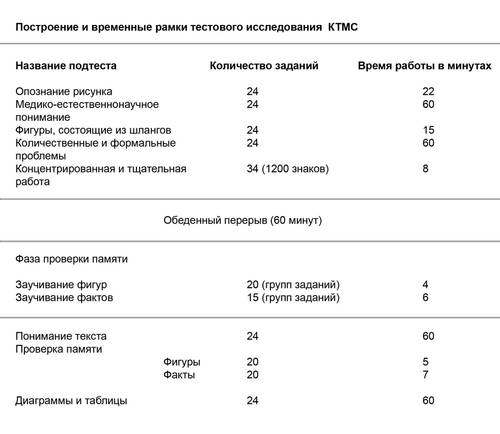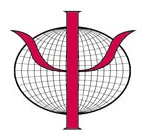Preparation of a psychological suitability test for medical specialties (KTMS)

КТМС is a Kostroma aptitude test for training in the medical professions. He helps with the selection of approaching students for successful education. Examination is intended for forecasting of success of training on medical careers of the future student, until it is in the status of the student applicant.
КТМС was developed on the basis of the American and European tests in success and corresponds to a design of the known test for medical professions (ТМС) which some decades ago successfully used by universities of Germany (Gessmann et al., 1995). КТМС is not a translation or adaptation ТМС to the Russian conditions. It will be redesigned with the help of new tasks, based on the principles of classical test design.
From work we want to pay attention to those with which the process of training in medical colleges – on the principle of reception of student physicians begins, on preliminary tests for applicants of the highest medical institutions. We suspect that the problem exists here. Education in the medical school presumes the existence of certain special qualities and abilities (Gessmann et al., 1995).
In other words, not everyone can be a successful student on the medical school. System of reception of students in medical colleges does not assume dimension of these characteristics. The superiority of the number of study applicants over the number of household jobs assumes the existence of the qualitative system of selection. In Russia all is limited by some exams in the form of a single exam and at best a conversation. As we see it, it is not enough. The problem is that in Russia there is simply no developed system of exam tests for medical university applicants. As can be observed result, significant percent of the students forced to stop training on medical professions. It is necessary more валидная system of selection of students on medical professions under these circumstances. In the solution of the given problem there is topicality of our work.
As S.Avanessov (2000) writes, modern testing is not only sure, but also валидный test, however, not in all cases of life, and developed for the concrete purpose; and ß «óÓÑ @ ¼Ñ¡¡® psychological testing is theoretical and empirical« í «@ ß¡« óá¡¡án the system of utterances (tasks) allowing to receive measurements of the corresponding psychological properties. Nowadays examinations are the most developed in scientific “Ô¡” @ ÞÑ¡¿¿ part of the methodological arsenal that adequately meets the theory with эмпирикой. It is just such understanding of tests that begins all in большей measure, in the newest Today tests are the most developed in the scientific “Ô¡” @ ÞÑ¡¿¿ part of the methodological arsenal that adequately meets the theory with эмпирикой. Such understanding of tests begins all in the measure to be asserted in the newest “ÔÑþÑ @ ßÔóÑ¡¡” ® and foreign literature (A.Anastasi, 2007, LFBurlachuk, 2000, MM Kabanov, A.E.Lichkos, WMSmirnow, 1998, BW Kulagin, 2001, WLMarishchuk, 2001, WM Melnikov, LTJampolski, 2003 I. Schwawara, 2001, etc.). It is necessary to mark, that we do not say about tightening of exam tests, we say about transition to qualitatively new level of a choice of applicants. We suspect that the new system of choice is capable of reducing the percent educated who can not cope with the submitted by him at the University of the demands and to raise the percent it is academic of the successful student. Achievement of such result will allow to lower material costs of universities. That is the practical significance of our work. Besides, it is necessary to mark, that КТМС can apply to a set of individual tracking programs as the result of check indicates skills which are on insufficient training on medical occupations the level of development (Trost, 1997) ,
ТМС was developed in the USA by G.Trostom and its colleagues (Comfort Guenter, 1970). As a result of long researches of the American scientists it was revealed that the indicators measured by check have high correlation indicators with success at training on medical professions (Comfort, 1997). Further, on behalf of the Standing Conference of Ministers of Education of Germany (1978) ТМС was redesigned to record all possible indicators of usefulness for training and, in addition to an examination of the examination as a criterion of access to a limited set on the job in Germany (Gessmann et al., 1995). The purpose was that as it is possible is more objective and reliable, to estimate individual fitness for training by means of special psychological examination. It is important to note that the forecast on success in work is not created by means of the given test.
Constructing the Kostroma aptitude test for training for the medical professions is based on the German training test T-TMS of the 1995 model, the developed ch.-c. by Gessmannom and others (Gessmann et al., 1995).
The scientific translation of the exam was carried out by the student of the 5 courses КГУ called N.A.Nekrassow, the Department of foreign languages of Elena Oladova. The control of the translation was carried out by the doctor of medical sciences Aleksei Kucherenko and the doctor of medical sciences Natalia Kucherenko, who are the employees of the medical-psychological department of the Psychotherapeutic Institute Bergerchausen (Germany, Duisburg). The structure, conditions of implementation and temporary restrictions remained invariable (see table 1).
Table 1

КТМС consists of 9 sub-tests, that is such tasks are grouped together. Five are rehearsed подтестов (part “And”) in the morning, remaining four (part) – in the afternoon. To each подтесту the short reference of work in which is declared, on which examination of capabilities given подтест is addressed, and in what way it is necessary to study. All tasks are constructed according to the principle of plural selection. After each task it is suggested five variants of the answer (Und-), from which one must choose only one. Inside подтеста tasks on a degree of growth of difficulty are located. The temporary framework for carrying out the test is strictly regulated (Gessmann et al., 1995).
A subsequent stage in the project after the development of the examination is the approbation of the translated version of the examination for the selection analysis of the tasks (Lienert and Raatz, 1994). After the given analysis, the test will be changed and printed again. After approval of the second version of test (КТМС “Revision 1”) the secondary selection analysis will be made. If the exam will not need further change, we can begin the analysis of the exam tasks, the level of complexity, the dissecting force, the index of selection and the homogeneity of the test (Lienert and Raatz, 1994). If after repeated Analysis of tasks results to necessary criteria, then КТМС can be constructed (Klajn П, 1994 will answer).
In this phase, the dissertation project is completed.
For the further development of the test it is important to check objectivity, reliability and validity (Anastasi A., 2007, Bodalev A., Stolin A.V, 2007). This should be taken into account in a separate scientific work, in which we try to find a connection between the test result and the academic success. If high correlations are found, we can predict the academic success of medical students at colleges (Trost, 1970), which is of practical importance, as previously mentioned.
literature
- Анастази А. Психологическое тестирование. СПб.: Питер, 2007.
- Бодалев А. А., Столин А. В. Общая психодиагностика. СПб.: Речь, 2000.
- Клайн П. Справочное руководство по конструированию тестов. Киев, 1994.
- Gessmann H.-W. et al. ÜTMS 95/96 – Übungstest für Medizinische Studiengänge im Orginalformat – 3. Testrevision – . Jungjohann Verlagsgesellschaft, Neckarsulm – Stuttgart, 1995.
- Lienert G.A., Raatz U. Testaufbau und Testanalyse. 5., voellig neubearbeitete und erweiterte Auflage, Weinheim, Beltz, 1994.
- Trost G. Test für medizinische Studiengänge (TMS). Bonn, 1970. Trost G. Test für medizinische Studiengänge (TMS).Bonn : Inst. für Test- und Begabungsforschung, 1997.
